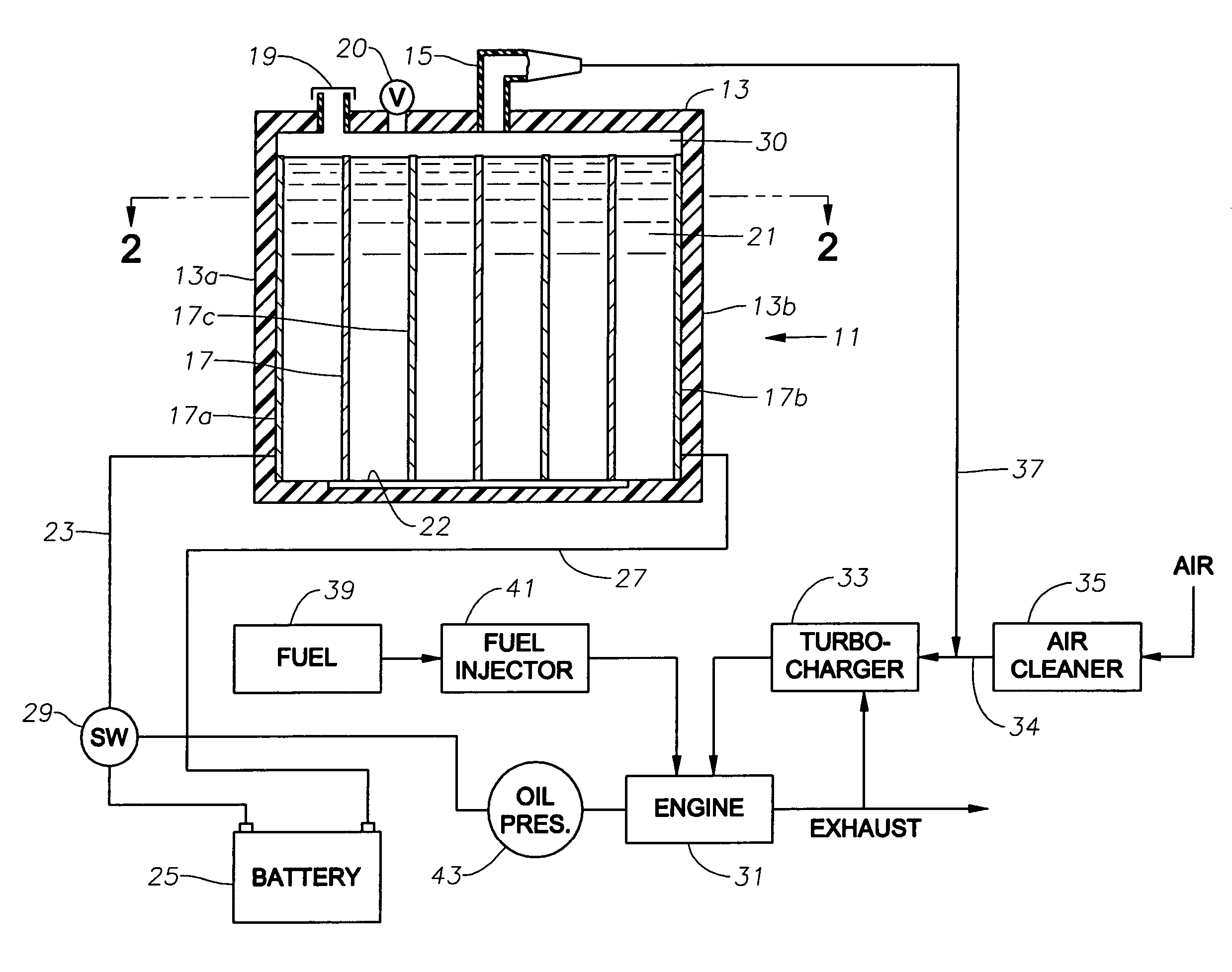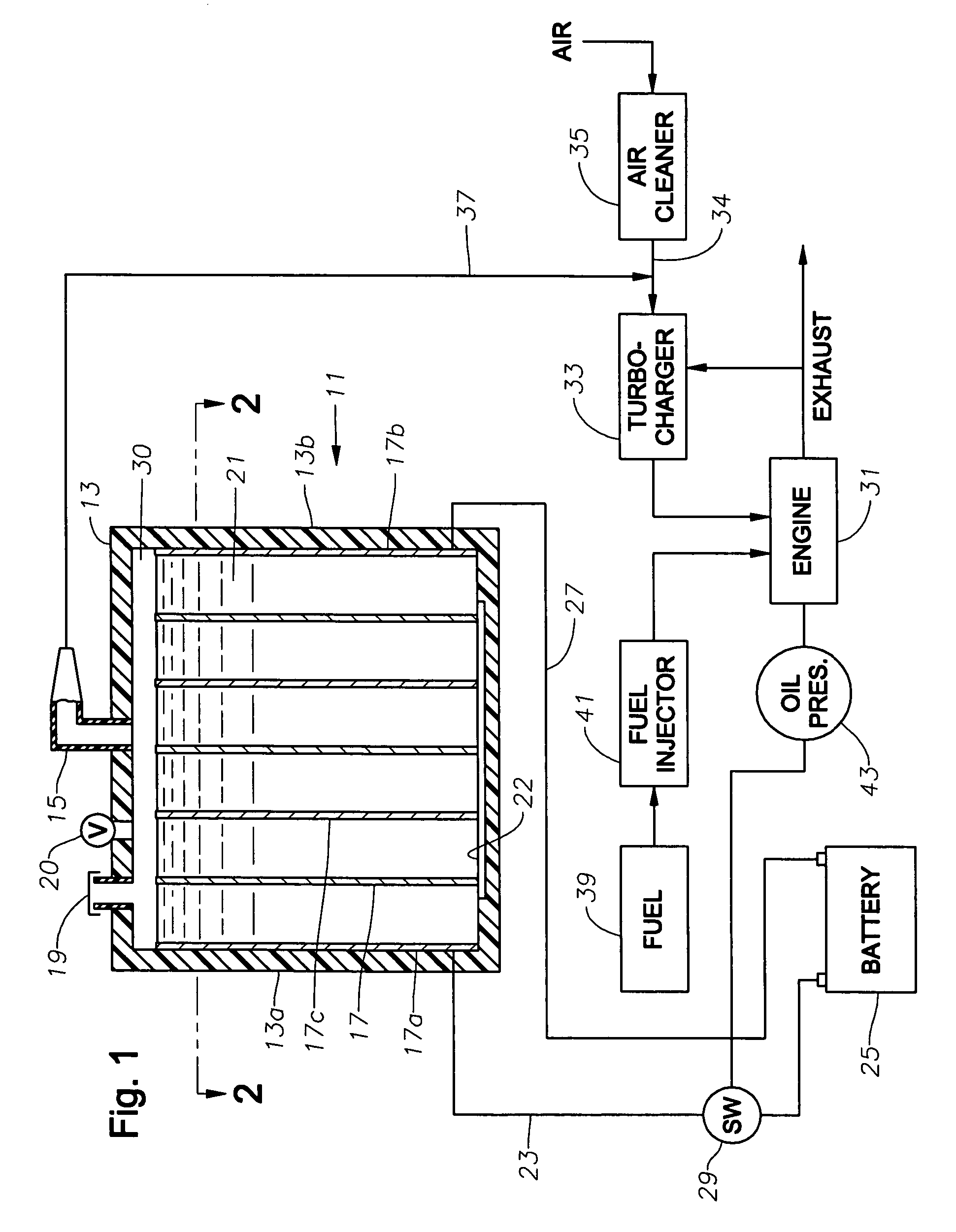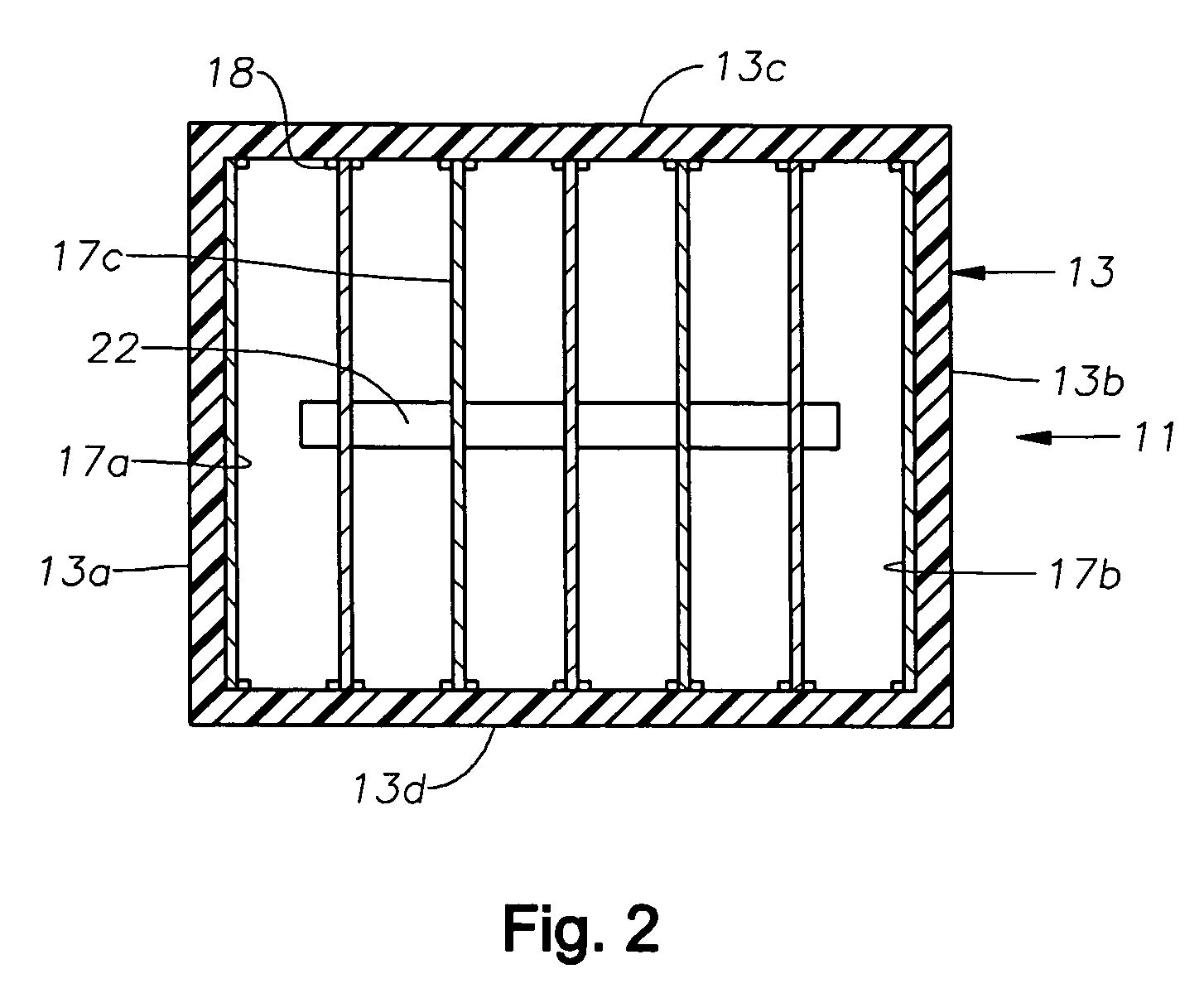Hydrogen-oxygen production device
a technology of hydrogen-oxygen and production device, which is applied in the direction of electrochemical generators, machines/engines, mechanical apparatuses, etc., can solve the problems of fossil fuel production, pollution of fossil fuel vehicles, and limited supply of fossil fuels, so as to reduce emissions and improve engine performan
- Summary
- Abstract
- Description
- Claims
- Application Information
AI Technical Summary
Benefits of technology
Problems solved by technology
Method used
Image
Examples
Embodiment Construction
[0013] Hydrogen-oxygen generator 11 has a housing 13 preferably constructed of a durable plastic material. Housing 13 is preferably generally rectangular, having four orthogonal sidewalls 13a, 13b, 13c and 13d, as shown in FIG. 2. Housing 13 has a closed top 16 and an outlet port 15 at its top 16.
[0014] A number of electrically conductive plates 17 are mounted in housing 11 parallel to each other and equally spaced apart in the preferred embodiment. Each plate 17 is preferably of stainless steel and substantially identical to the other plates. Referring to FIG. 2, plates 17 are parallel to housing sidewalls 13a, 13b and perpendicular to sidewalls 13c, 13d. Vertical edges of plates 17 extend into slots in insulated retainers 18 on the inner sides of housing sidewalls 13c, 13d. If the material of housing 13 is a good electrical insulator, retainers 18 may be integrally formed with sidewalls 13c, 13d.
[0015] Referring again to FIG. 1, the upper edges of plates 17 are spaced a short di...
PUM
 Login to View More
Login to View More Abstract
Description
Claims
Application Information
 Login to View More
Login to View More - R&D
- Intellectual Property
- Life Sciences
- Materials
- Tech Scout
- Unparalleled Data Quality
- Higher Quality Content
- 60% Fewer Hallucinations
Browse by: Latest US Patents, China's latest patents, Technical Efficacy Thesaurus, Application Domain, Technology Topic, Popular Technical Reports.
© 2025 PatSnap. All rights reserved.Legal|Privacy policy|Modern Slavery Act Transparency Statement|Sitemap|About US| Contact US: help@patsnap.com



